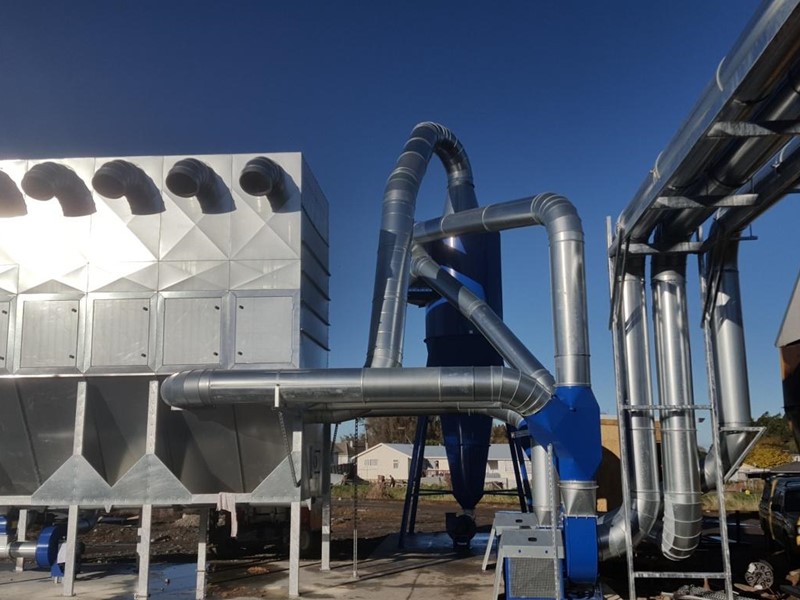
Dust Extraction Systems For Woodwork NZ
A dusty environment in woodworking premises results in inefficiencies due to the time spent cleaning down machines and finished products, but most importantly, it is immediately a danger to staff and any other employees who happen to be in the area, as the dust they are exposed to can cause sickness resulting in time off work. Many assume it is the dust you can see that is harmful, however it is the invisible dust that is the greatest danger – this dusty environment can result in illnesses that present much later in life – long after the employee has left the workplace but if the illness can be traced back to a work condition it may raise future issues.
If you are interested in dust extraction systems, have a look at the NZ Duct + Flex Dust Extraction Range.
The dust that’s most harmful to our lungs is between 1 and 10 microns and we can only see down to about 40-50 microns. So it’s the very fine dust that’s the biggest danger and you can’t see it ! These particles are generally referred to as PM10 particles.
Dust extraction systems for woodwork, if specified and installed correctly, will give years of a safer working environment and despite suppliers promoting different features, the basic principles of how they work are the same.
Everyone has used a domestic vacuum cleaner : it works by sucking up air through the tool attachment, metal wand, flexible hose before the air passes through the dust filter bag and finally out the fan. Clean air comes out the other side.
Industrial Dust Extraction Systems for woodwork in NZ work in the same way, the only difference is size!
A large industrial bag house filter has a large number of ‘filter bags’ or ‘socks’ acting as the vacuum cleaner dust collection bag. The filter is composed of 2 sections : CLEAN and DIRTY.
The dust laden air is sucked from the woodworking machines through flexible hose from the machines and then through metal ducting before entering the DIRTY air chamber of the filter. The air is then separated out by the filter socks which hang inside the bag house and allows air to escape through them, but, they trap the dust. Most filter socks trap 99.95% (or better) of all dust down to 0.5microns ie SMALLER than 1 micron – the dangerous particles.
Bag Houses, as these filters are often called, can be fitted with Regeneration fans. These fans situated at the top of each chamber, clean the filter bags or socks by blowing clean air in a reverse direction through the socks to help remove collected dust from the sock material so they carry on working efficiently. This is quite a gentle way of cleaning the filter socks and means they will perhaps last longer than those being pulsed with compressed air.
Any sawmill, joinery shop or timber processing plant will benefit from a dust extraction system for woodwork. Benefits include not only health but also;
- Less problems with machinery ( modern machinery often has a extraction speed and volume in the manufacturers manual – is yours fast enough?) and providing less extraction may result in more expensive visits from a service technician over time
- Less cleaning – a recent customer had 6 staff spending 2-3 hours cleaning every Friday. Reducing that to around an hour saved over $10,000 /year in non- productive wage costs. That alone covered the payments on the money borrowed for the new dust extraction system
- Better finish - Burring and marks on timber is often the result of insufficient extraction of the dust
- And collecting dust can make money! If you have a reasonable amount of untreated sawdust, the collected dust/shavings can be separated from treated timber dust so you can sell it and maybe reduce your landfill charges





